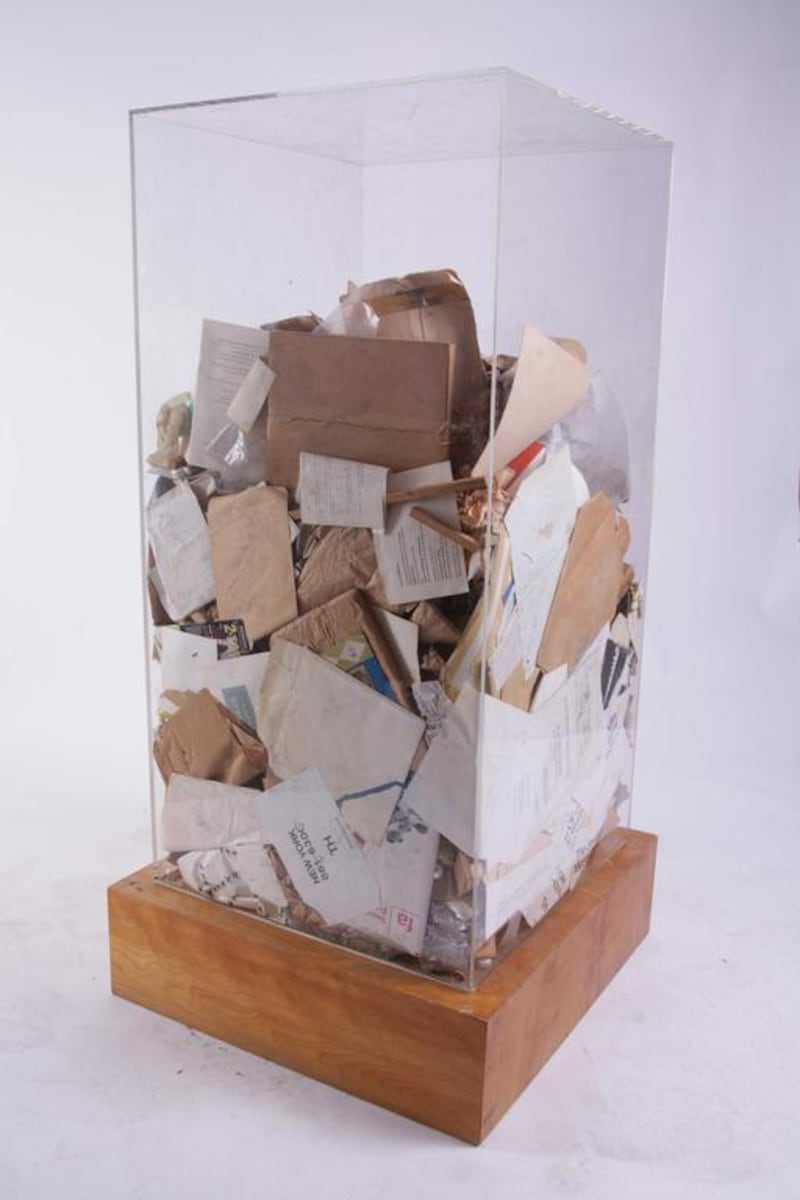Art Basel is one of the most important contemporary art fairs in the world. More than 280 of the world’s leading galleries exhibit the works of over 4,000 artists during its four-day run in the Swiss city.
Attempting to offer a global snapshot of contemporary art, there are interesting works from all over the world at this event. This year, there are four exhibiting galleries from the Middle East, and a wide range of films that shed light on artists and issues from the region.
Leila Heller Gallery, which has spaces in New York and Dubai and is the region’s largest commercial gallery space, is exhibiting at the fair for the first time. In the feature section of Art Basel, the gallery will be showing work by Arman, a French-born American artist (1928-2005). Arman’s sculptures are characterised by their repetitive format. In the 1950s and 60s, Arman became preoccupied with the identical objects of mass production and made sculptures from many different items. The works in Leila Heller Gallery’s booth range from 1959 to 1992 and are from his Poubelle series, which are assemblages of rubbish that the artist placed in Plexiglas vitrines.
Another Dubai space, Green Art Gallery, will be showing works by New York-based artist Seher Shah in the fair’s Statements section. Fascinated with Brutalist architecture and how it can occupy a space but also represent a form of idealism, Shah’s work contemplates the aesthetics of buildings in her incredibly intricate drawings. For the series showing at Art Basel, she has focused on two specific buildings – a dormitory for an ashram in Pondicherry, India, and Tokyo’s Nakagin Capsule Tower.
From Beirut, Sfeir-Semler Gallery will present work from Lebanese artist Marwan Rechmaoui. Currently exhibiting in the Sharjah Biennial, Rechmaoui is an important regional artist who often uses industrial materials such as concrete, rubber, tar and glass to create tactile works on a large scale that reflect the urban situation of our cities.
Part of Rechmaoui’s Blazon project will be on display – a series that explores the expansion and dynamism of Beirut, under constant influx of immigrants and in the looming shadow of war. Rechmaoui created a coat of arms and banners corresponding to each city district, and is interested in the collision and overlap between each one.
Gypsum Gallery from Cairo is another first time participant at Art Basel. One of the strongest young galleries in the region, Gypsum will also be showing in the fair’s Statements section with the work of Maha Maamoun.
Maamoun works primarily in photography and video, often subverting commonplace images found in mainstream culture in novel and insightful ways. Through an unusual crop, a seamless edit, an odd juxtaposition, an incongruent photomontage, a staged remake, Maamoun shakes up the viewer’s expectations.
At Art Basel, she will show The Subduer, a new photographic installation.
Maamoun’s work will also be part of the fair’s robust film programme, which includes 34 film and video works from participating galleries. Cairo-based film curator Maxa Zoller has put together the programme for the third consecutive year and Maamoun’s work will screen in the short film programme alongside the work of Kader Attia – a prominent French-Algerian artist.
Highlights also include Eric Baudelaire's feature length film Also Known As Jihadi, which follows the progress of a young man's journey from France to Syria, and back to France where he is currently incarcerated for allegedly joining Daesh. It is based on real events, and drawn from thousands of pages of judicial documents and is a powerful exploration of a complex topic that is affecting millions around the globe.
Zineb Sedira, a prominent Algerian artist, also has a short film showing. In Les Terres de mon père (2015), Sedira goes in search of her father's land and its history in the Aurès region.
aseaman@thenational.ae





